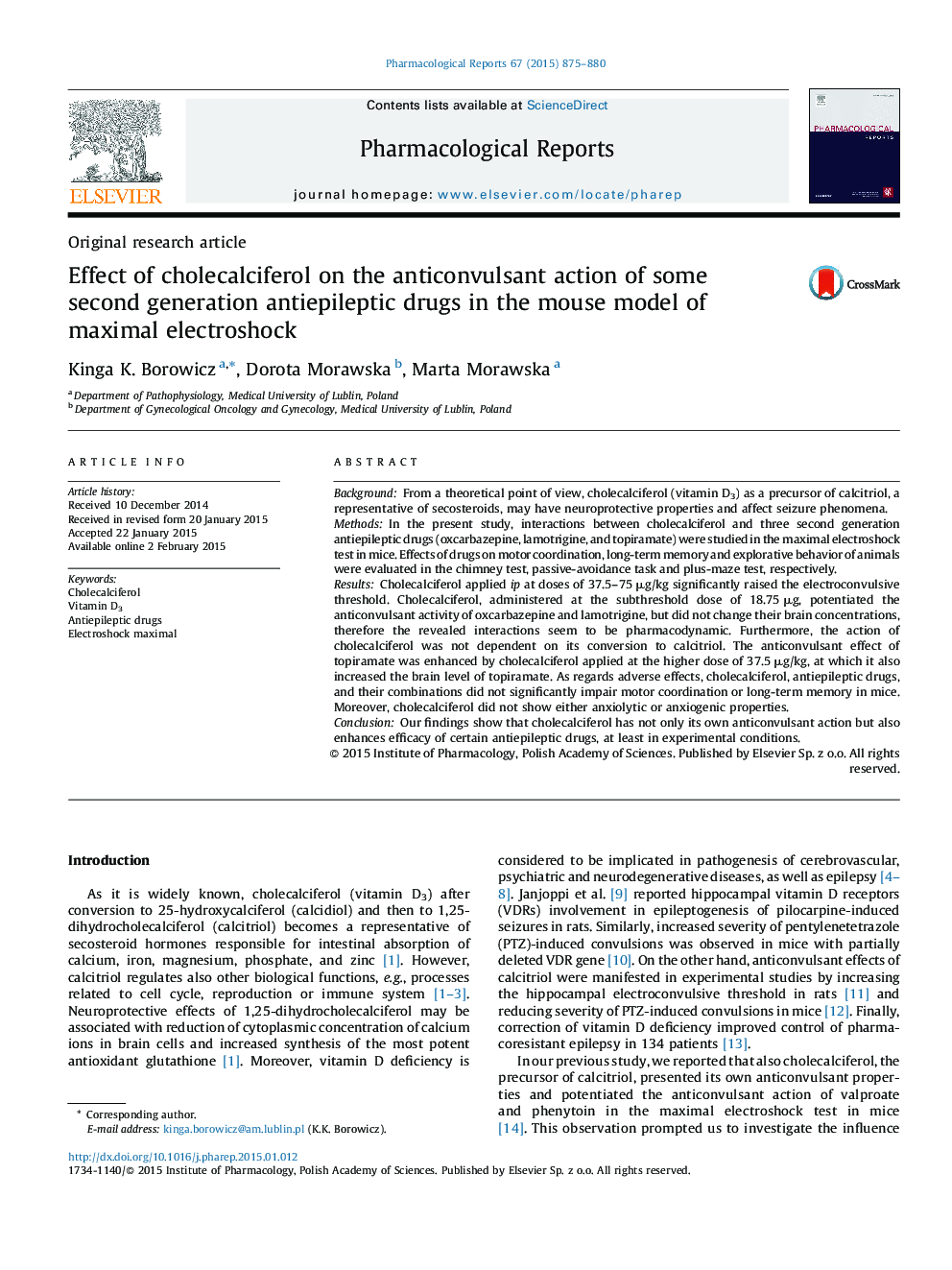| Article ID | Journal | Published Year | Pages | File Type |
|---|---|---|---|---|
| 2011021 | Pharmacological Reports | 2015 | 6 Pages |
BackgroundFrom a theoretical point of view, cholecalciferol (vitamin D3) as a precursor of calcitriol, a representative of secosteroids, may have neuroprotective properties and affect seizure phenomena.MethodsIn the present study, interactions between cholecalciferol and three second generation antiepileptic drugs (oxcarbazepine, lamotrigine, and topiramate) were studied in the maximal electroshock test in mice. Effects of drugs on motor coordination, long-term memory and explorative behavior of animals were evaluated in the chimney test, passive-avoidance task and plus-maze test, respectively.ResultsCholecalciferol applied ip at doses of 37.5–75 μg/kg significantly raised the electroconvulsive threshold. Cholecalciferol, administered at the subthreshold dose of 18.75 μg, potentiated the anticonvulsant activity of oxcarbazepine and lamotrigine, but did not change their brain concentrations, therefore the revealed interactions seem to be pharmacodynamic. Furthermore, the action of cholecalciferol was not dependent on its conversion to calcitriol. The anticonvulsant effect of topiramate was enhanced by cholecalciferol applied at the higher dose of 37.5 μg/kg, at which it also increased the brain level of topiramate. As regards adverse effects, cholecalciferol, antiepileptic drugs, and their combinations did not significantly impair motor coordination or long-term memory in mice. Moreover, cholecalciferol did not show either anxiolytic or anxiogenic properties.ConclusionOur findings show that cholecalciferol has not only its own anticonvulsant action but also enhances efficacy of certain antiepileptic drugs, at least in experimental conditions.
